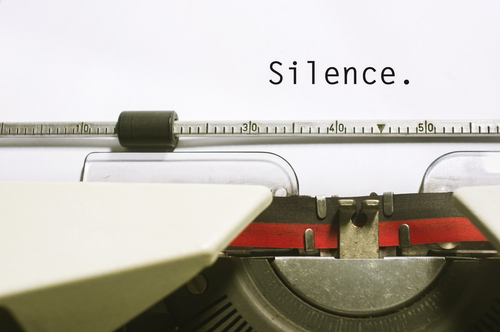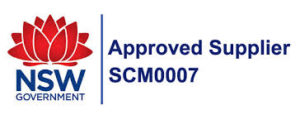 When we think about bullying behaviour we often revert back to our childhood and think about those kids in the school yard that would taunt, steal lunch money or food, cause or threaten physical harm, verbally abuse and generally just make life miserable for the kids around them.
When we think about bullying behaviour we often revert back to our childhood and think about those kids in the school yard that would taunt, steal lunch money or food, cause or threaten physical harm, verbally abuse and generally just make life miserable for the kids around them.
Unfortunately the reality is that some of those kids continue this bullying behaviour into their adult life and become the person that makes derogative and inappropriate comments, withhold vital work information or even spread malicious rumours.
Bullying in the workplace is a problem that is costing Australian businesses anywhere between $6 billion and $36 billion a year, according to the Australian Productivity Commission. This figure includes indirect costs such as absenteeism, staff turnover, loss of productivity and legal costs. According to Comcare, in 2011 the number of mental stress claims from workplace bullying equalled those for stress from work pressure.
Bullying is a complex issue. Case management can be difficult and organisations often lack follow-up procedures. What is more, Australian law does not easily categorise workplace bullying. It can fall under the mantle of workers compensation, unfair dismissal, workplace health and safety, discrimination and even criminal law.
From 1 January 2014, workers can apply to the Fair Work Commission (FWC) for an order to stop the bullying. The FWC can make any order it considers appropriate if it finds that the worker has been bullied at work and that there is a risk that the worker will continue to be bullied at work. If the subject of an order by the FWC does not comply, that is a contravention of the Fair Work Act which may result in civil contravention proceedings and potentially fines.
Many employers and organisations are nervous and are looking to seek advice on what to do. There may not be obvious signs that bullying is occurring but does not mean it is not occurring. What we do know is that wherever people work together, there is a risk of workplace bullying occuring. We also know that the longer the bullying behaviour continues the more difficult it is to address and the harder it becomes to repair working relationships.
What is bullying?
Safe Work Australia define workplace bullying as “repeated and unreasonable behaviour directed towards a worker or a group of workers that creates a risk to health and safety“. Bullying behaviour can take many forms and can be carried out in a variety of ways, including through email or text messaging, internet chat rooms, instant messaging or other social media channels. A single incident of unreasonable behaviour is not considered to be workplace bullying however it may have the potential to escalate and should not be ignored. Here are some examples of what may be considered unreasonable behaviour:
- abusive, insulting or offensive language or comments
- unjustified criticism or complaints
- continuously and deliberately excluding someone from workplace activities
- withholding information that is vital for effective work performance
- setting unreasonable timelines or constantly changing deadlines
- setting tasks that are unreasonably below or beyond a person’s skill level
- denying access to information, supervision, consultation or resources such that it has a detriment to the worker
- spreading misinformation or malicious rumours
- changing work arrangements, such as rosters and leave, to deliberately inconvenience a particular worker or workers
- excessive scrutiny at work.
What can you do?
It is really important to create a work environment where everyone is treated with dignity and respect and unreasonable behaviour is not tolerated. Employers should have systems in place to prevent bullying as well as having clear procedures to respond to any allegations that may arise. If you believe these things will sort themselves out, STOP now before you find yourself in front of the Fair Work Commission.
The Safety Australia Group recommend a risk management approach that treats workplace bullying as safety hazard. If bullying is occuring at your workplace now then the issue should be dealt with promptly just as you would address any other workplace hazard. When investigating allegations it is really important to ensure procedural fairness and that all parties are supported. If you do not have the internal professional resources to deal with bullying allegations we recommend you seek professional advice.
If there are no obvious signs of workplace bullying occuring, a good starting point would be to speak to workers to find out if there are any instances of unreasonable behaviour occurring or situations which could increase the risk of bullying. Keep an eye out for changes in workplace relationships, patterns of absenteeism, turnover or workplace grievances. You cannot manage risk if you haven’t identified the potential hazards.
Everyone in the workplace should have a clear understanding of what is expected of them and work towards productive and respectful relationships to create a more harmonious and collaborative environment three ways:
- Effective case management: to deal with incidents of bullying and harassment when they occur (responding);
- Constructive communication skills: to build skills for dealing with workplace conflict and engender collaboration (managing the risk); and
- Positive culture development: to create a system of working together that enables constructive communication and inhibits bullying behaviour (controlling the risk).
The idea is to concentrate far more effort on prevention of bullying and promotion of constructive communication.
Safety Australia currently run Workplace Bullying Awareness training for organisations. Please contact the Safety Australia Group on 1300 585 128 or visit our training website for more information.

 Safety Australia Group
Safety Australia Group